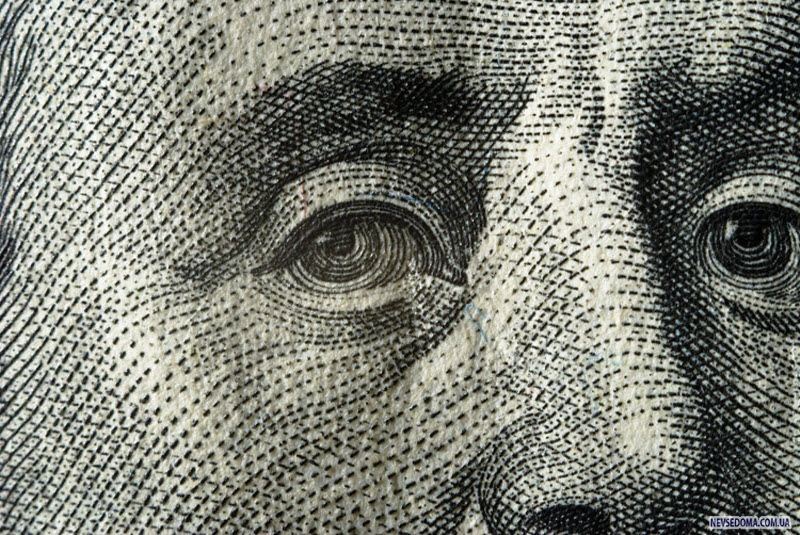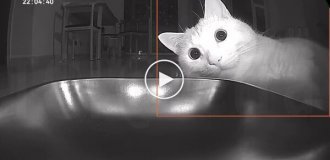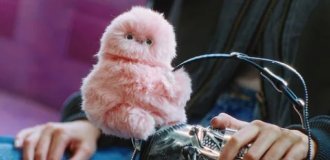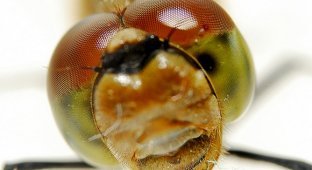Macro. Considering $100 (14 photos)
Ever since the childhood hobby of collecting coins, and with them paper money from different countries, it has always been interesting to look at the small details of the design of banknotes. Today, using macro photography, I bring to your attention photographs of a hundred dollar bill.

Source: Zhzhcommunity/ru_macro

1.
A little history of the dollar:
At the beginning of the 16th century, a silver mine began operating in the mountains of northwestern Bohemia. In the valley next to the mine, the city of St. Joachimsthal was founded (after the name of the valley, thal is German for “valley”). Beginning in 1519, silver coins with the image of St. Joachim for the Roman Empire began to be minted here. The coin was called “Joachimsthaler”. Over time, it began to be called a thaler. Thaler became widely used in Europe. In Sweden, “dalers” have been minted since 1534, in Denmark – since 1544. In England it was called the daller, then the dallar and finally the dollar.
During the time of Spanish dominance at sea, one of the hardest currencies in the world were the Spanish silver reals and gold doubloons. They were also called dollars (in Portugal - dalars). The Bank of England held such a huge quantity of them, captured as spoils of war or received as payment of debts, that the English king George III ordered the use of Spanish reals in circulation. Each real was worth 1/8 of an English pound; it was called a piece of eight (one eighth, eighth), which over time turned into “peso”. Pesos found their way to the North American colonies, where, like other large silver coins, they also became known as dollars. The appearance of the famous $ sign is also associated with them. The long English piece of eight on paper turned into a crossed out eight, which eventually became $.

2. The basic design of most dollar bills was approved in 1928. The front side of the dollars depicts portraits of... no, no, not only presidents, but also other US statesmen. In addition to the presidents, two bills depict portraits of the founding fathers: the first Secretary of the Treasury, Alexander Hamilton, on ten dollars, and the scientist, publicist, and diplomat Benjamin Franklin, on a hundred:

3. On the other side of the bills there are images illustrating the history of the United States. On the $100, this is Independence Hall in Philadelphia, the building where the Declaration of Independence was signed:

4. And now the slides! Of note, what is not visible to the naked eye, the first thing I found was the USA100 microtext inside the denomination symbols in the lower left corner:

5. Microtext THE UNITED STATES OF AMERICA hidden on the lapel of Franklin's coat:

6. True, this text is quite difficult to read and gets lost among other contrasting elements of the jacket.

7. I can’t help but note that most elements have an increased thickness of the paint layer and are well perceived to the touch

8.

9. The entire banknote is dotted with colored fibers of red and blue, which are clearly visible in plain areas

10. All images and prints are made of very high quality and have clear pattern elements

11. The denomination in the lower right corner is printed with a special shiny ink that changes color from green to black when the bill is rotated

12. The portrait is wonderfully executed, clearly and contrastingly, as if with a background.

13. The reason why the dollar turned green is curious. In 1869, the US Department of the Treasury signed a contract with the Philadelphia company Messers J. M. & Cox for the production of currency paper with special watermarks in the form of barely noticeable vertical stripes 5-8 cm wide. Around the same years, the Treasury first began printing dollars with using green paint. The reason for the innovation was the appearance of photography: old-style banknotes, made with black paint, where green was applied only along the edges, became very easy to reproduce photographically. Since green dye was already used in production, it began to be used in large volumes, and the selection and purchase of new ones turned out to be unnecessary. In recent years, dollar bills have once again acquired new colors - shades of yellow and pink.

14. This is where we’ll probably finish our dive into the macro world of one of the most popular banknotes.






















